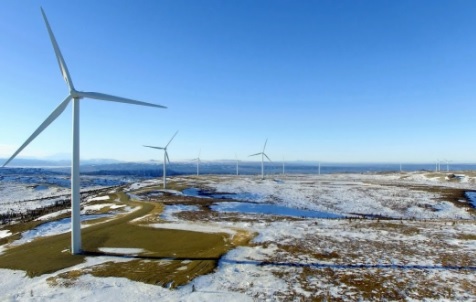Special to WorldTribune, February 26, 2021
Analysis by Eric Clary
As soon as the first blackouts rolled through The Lone Star State on Feb. 14, the finger-pointing race was on. After all, in the now biblical quote by Rahm Emanuel: “You never want a serious crisis to go to waste.”

But before previewing what will be a vicious post-mortem, let’s state the obvious: If anything could be said definitively of the Texas energy market, it is that gas is king. Had gas not filled the void left by wind, the scenes in Texas would’ve been much worse.
Dramatic online images of helicopters dumping antifreeze on wind turbines made renewables an easy early target. But the renewables, didn’t just appear, their origins came from specific institutions and policy initiatives. A 2005 The Dallas Morning News article recounts that,
“In 2005, [Gov. Rick] Perry backed a giant infrastructure project to install utility poles and wires to carry wind power from West Texas to Dallas and beyond. Known as the Competitive Renewable Energy Zones Program, the CREZ lines eventually spanned over 3,500 miles and cost nearly $7 billion.”
By 2020, Electric Reliability Council of Texas (ERCOT) data had shown that wind energy accounted for 23% of the energy produced overtaking nuclear, coal, and solar. Some experts became weary of the growing reliance on green energy. President of the Texas Alliance of Energy Producers Jason Modglin points out that:
“Despite growing energy demand, federal regulations and incentives hamper the investment in baseload power provided by gas, coal and nuclear power. Those federal incentives have poured into wind and solar-tripling our wind capacity over the past ten years while at the same time retiring 5,000 MW of coal generation. Renewable fuel sources provide lower energy cost to consumers but have not increased the reliability of our grid.”
As Modglin implies, capacity is not production. When the storm hit, Texas wind installations which theoretically could’ve provided 30 gigawatts of electricity, contributed a mere 3.4 gigawatts on Friday morning. The Wall Street Journal affirms that, “Between 12 a.m. on Feb. 8 and Feb. 16, wind power plunged 93% while coal increased 47% and gas 450%.” 4 days of frigid temperatures forced more gas generators offline. This confirmed many industry experts’ concerns about the phasing out of traditional energy and placing all of the eggs into the natural gas basket.
But, renewable energy advocates, somewhat ironically, insist that the Texas blackouts were due to the “deregulated” energy market. Wall Street Journal reporters Katherine Blunt and Russell Gold concluded,
“The core problem: Power providers can reap rewards by supplying electricity to Texas customers, but they aren’t required to do it and face no penalties for failing to deliver during a lengthy emergency.”
As appealing as the deregulation trope is, University of Houston energy economist, Edward Hirs III claims, “The fact is the market is still heavily regulated. It’s not deregulated, it’s just regulated differently.”
Hirs is referring Texas’ single buyer energy market where one buyer, the grid operator, pays generators for the amount of energy supplied to the grid.
In 2013, Hirs and coauthor Paul W. MacAvoy warned of the Texas 2021 blackout scenario in an article entitled, “Texas suffers from Soviet-style electricity distribution system.” In it, the authors compared ERCOT, to a Soviet bureaucracy that utilized linear modeling. The system fixed grain prices during a crop failure and resulted in the 1975 Soviet grain shortages.
ERCOTs computerized system instantly compares estimated costs of energy production and transmission across the market. The authors explain that, “Its failure is in not having an implied price for future supply in a supply/demand market with growing demand for electricity.”
The artificially low prices do not incentivize generators to increase capacity. Many of the power producers elect to do maintenance before peak demand in the sweltering summer months. When an unexpected winter storm strikes during a time of low supply, shortages occur in the form of rolling blackouts.
While ERCOT’s monopsony may not resemble traditional state regulation, other features of the Texas energy market do.
In a 2020 symposium, Hirs explained that among the features of the “deregulated Texas market” is a guaranteed profit for transmission and distribution companies. In the early 2000s the Public Utility Commission of Texas (PUCT) identified areas for transmission infrastructure for renewable energy. To fund the transmission and distribution infrastructure, costs were socialized by adding a surcharge on to the end consumer. Hirs and MacAvoy conclude that,
“The current regime of partial deregulation — no control of prices below the caps allowed for generation but not distribution — forces consumers to ‘choose’ among dozens of middlemen from whom to buy the same power package from the same 1960s power plant on the outskirts of town.”
There’s something else at play here. When reporters falsely call a partially regulated market “deregulated”, the implications are that the deregulatory environment failed. Any real attempt to fix the Texas system will require acknowledging the reality on the ground.
Eric Clary is a digital media consultant at Political Media, Inc.
